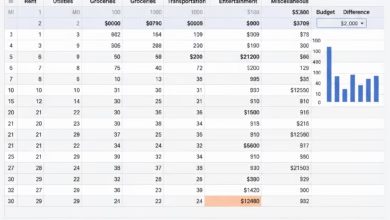How much life insurance do you really need?
Discover how to calculate the ideal value for your life insurance

Deciding to buy life insurance is a responsible first step. The next question, however, is where most people get stuck: “How much do I actually need?”
It’s a question loaded with financial jargon and emotional weight. As a result, many Americans either make a quick guess or, worse, do nothing at all. They might grab the free 1x-salary policy from their employer or pick a number that “sounds” big, like $500,000, hoping it’s enough.
Here’s the hard truth: Most people are dangerously underinsured.
A “guess” won’t pay off a $400,000 mortgage, cover 15 years of lost income, and send two kids to college. This article is not about selling you a policy. It’s about giving you the tools to find your specific number. We’ll move from simple rules of thumb to the in-depth formula that financial planners use, ensuring the people you love are protected from a financial catastrophe.
Why Life Insurance Is a Financial Cornerstone, Not Just a Policy

Before we calculate a number, we must agree on the purpose of life insurance. It is not a lottery ticket for your family. It is a risk-management tool.
The death benefit from a life insurance policy is designed to do one job: replace your economic value.
Think of it as a financial “substitute.” If you were to pass away, your paycheck stops. Your contributions to the household (from childcare to managing investments) stop. Life insurance steps in to fill that financial gap, acting as a crucial safety net that allows your family to:
- Maintain their standard of living: Paying the mortgage, covering utility bills, and buying groceries.
- Pay off all debts: Eliminating the burden of a mortgage, car loans, and student loans.
- Fund future goals: Ensuring college is paid for and retirement plans for your surviving spouse remain intact.
- Grieve without financial panic: This is the most important, non-financial benefit. It provides breathing room during the worst time of their lives.
Your life insurance number isn’t just a number. It’s a mortgage payment. It’s a college acceptance letter. It’s stability.
The “10x Your Income” Rule: A Good Start or a Bad Myth?
You’ve probably heard this common piece of advice: “Just buy 10 times your annual income.” If you make $80,000 a year, you buy an $800,000 policy.
Is it a good rule? It’s a fantastic starting point because it’s simple and gets you thinking in the right ballpark. It’s far better than just guessing.
Why is it flawed? This rule is a blunt instrument in a situation that requires surgical precision. It completely ignores your unique financial picture.
- It ignores your debts. The person with an $800,000 mortgage needs more coverage than the person who rents or owns their home outright.
- It ignores your family size. It doesn’t differentiate between a parent with one child and a parent with four children, all of whom plan to attend college.
- It ignores your spouse’s income. A dual-income household where both partners make $100,000 has a different need than a single-income household with a stay-at-home parent.
- It ignores your goals. It’s just an income-replacement multiple; it doesn’t specifically earmark funds for a $200,000 college fund.
The 10x rule is a C-grade answer. It’s passable, but we can do better.
A Better 15-Minute Method: Calculating Coverage with DIME
A much more accurate and popular method is the DIME formula. It’s an acronym that covers the four biggest financial obligations your family would face. This is something you can calculate in the next 15 minutes.
Just grab a piece of paper or open a spreadsheet and add up these four categories:
D = Debt
Your debts don’t disappear when you die. They become the responsibility of your estate, and by extension, your family. List every single dollar you owe.
- Mortgage: Write down the full payoff amount.
- Student Loans: This is critical. Federal student loans are typically discharged upon death, but private student loans are not. If you or your parents co-signed a private loan, your co-signer is on the hook.
- Car Loans: The full payoff amount for all vehicles.
- Credit Card Debt: The total balance on all your cards.
- Personal Loans or any other outstanding debts.
- Total Debt: $_________
I = Income
This is the “10x rule” but with more nuance. Your goal is to provide a lump sum that, when invested, can replace your income for a set number of years. How long? Most planners suggest at least until your youngest child turns 18 and is out of the house.
- Your Annual Income: $_________
- Number of Years to Replace: ___ (e.g., 15 years)
- Total Income Needed: (Income) x (Years) = $_________
Pro-Tip for Stay-at-Home Parents: Do not make the mistake of thinking a stay-at-home parent needs no life insurance. Their “income” is the cost to replace their services. This includes childcare, transportation, cooking, and home management, which can easily cost $50,000 to $100,000 per year.
M = Mortgage
Yes, we already listed this in “Debt,” but the DIME formula often lists it separately to ensure you absolutely do not forget it. The single greatest gift you can leave your family is a home that is 100% paid for. If you included it in the Debt section, you can skip this. If not, add your full mortgage payoff amount here.
E = Education
This is the category that sinks many families. College is astronomically expensive, and you want to ensure your children’s future is not a casualty of your passing.
- Estimated Cost: Be realistic. A 4-year degree at a state university (including room & board) can easily exceed $100,000. A private university can be $250,000+.
- Number of Children: ___
- Total Education Fund: (Cost per child) x (Number of children) = $_________
Your DIME Formula Total:
Debt + Income + Mortgage + Education = Your Total Coverage Need

For many people, this number is a shock. It’s often well over $1 million, and that’s okay. That’s the real number, and term life insurance is more affordable than you think.
The “Financial Planner” Method: An In-Depth Needs Analysis
The DIME method is excellent. But if you want the most precise, comprehensive calculation, you’ll use the “Needs Analysis” method. This is what a high-end financial planner would do.
This method has two parts:
- Totaling all your family’s future financial needs (Obligations).
- Subtracting all your current financial assets (Assets).
The difference between them is your life insurance gap.
Step 1: Calculate Your Total Financial Obligations (The Needs)
- Final Expenses: Costs for a funeral, burial, and any end-of-life medical bills. A safe, conservative number is $15,000 – $20,000.
- Total Debt Payoff: (Same as the “D” in DIME). All mortgages, student loans, car loans, etc.
- Total Income Replacement: This is where we get more advanced. Instead of a simple multiple, let’s calculate the capital needed to generate income.
- Example: Your family needs $75,000 per year to live on. A common, safe withdrawal rate from an investment portfolio is 4-5%.
- Calculation: $75,000 (Annual Need) / 0.04 (4% Withdrawal Rate) = $1,875,000.
- This $1.875M “capital retention” model means your family could live off the interest forever without touching the principal. This is the gold standard of income replacement.
- Future Education Goals: (Same as the “E” in DIME). Your full college funding goal.
- Other Goals: Do you want to pay for a child’s wedding? Leave a donation to a charity? Help your kids with a down payment on their first home? Add those here.
Sum of Obligations = $_________
Step 2: Subtract Your Current Liquid Assets
Now, we subtract what you already have. Be honest and conservative here. Don’t include your home’s equity, as your family needs to live there.
- Current Savings: Cash in checking, savings, and money market accounts.
- Current Investments: Non-retirement accounts (e.g., a brokerage account).
- Retirement Savings: Your 401(k) and IRA balances. * (There’s a debate here, as this money is for your spouse’s retirement, but in a true emergency, it is available).
- Existing Life Insurance: That group policy from work, or any small policies you already own.
- College Savings: The current balance of any 529 plans.
Sum of Assets = $_________
Your In-Depth Calculation:
(Total Obligations) – (Total Assets) = Your True Life Insurance Need

This number is the most accurate reflection of your financial responsibilities. This is the check your family needs to be made whole.
How Your Life Insurance Needs Change Over Time (And Why You Need a “Term”)
Your life insurance need is not static; it’s a bell curve.
- Twenties/Singles: Your need is likely low. You might only need enough to cover co-signed student loans and your final expenses. A $100,000 – $250,000 policy is often sufficient.
- Thirties/New Family/New Home: This is your PEAK NEED. You have a new 30-year mortgage, young children (long income-replacement timeline), and very little in savings. This is when you need that $1.5M – $2M+ policy.
- Forties/Fifties (Established): Your mortgage is partially paid down, and your 401(k) and savings are growing. Your need is starting to decrease.
- Sixties/Empty Nesters: Your house is paid off. Your kids are through college. You have a large retirement nest egg. Your need for life insurance has dramatically decreased. You are “self-insured.”
This timeline is the single biggest argument for Term Life Insurance.
Term vs. Whole Life: How It Affects Your “How Much” Calculation
This is a critical, related topic. The calculations we just did are to determine your need. The type of policy is how you fill that need.
- Term Life Insurance: This is pure, simple, and affordable insurance. You buy a policy for a specific “term,” such as 20 or 30 years. If you pass away during that term, your family gets the death benefit. If you don’t, the policy expires.
- This is what 95% of Americans need. It is designed to cover your temporary (but massive) needs: the 30-year mortgage and the 20 years it takes to raise your children. It’s cheap, allowing you to buy the $1.5M you actually need.
- Whole Life Insurance (Permanent): This policy lasts your entire life and includes a “cash value” savings component. It is 10-20 times more expensive than a term policy for the same death benefit.
- When does it make sense? For high-net-worth individuals using it for complex estate tax planning, funding a special needs trust, or for some business succession plans.
For the average American family, the “how much” question is best answered by buying an affordable 20- or 30-year term policy with the full coverage amount you calculated.
What About Life Insurance Through My Job? (And Why It’s Not Enough)
Many employers offer “group life insurance” as a benefit, often for free or at a very low cost. This is typically 1-2 times your annual salary.
This is a great supplement, but it should NEVER be your primary plan.
- It’s Not Enough: As our DIME calculation showed, 1x your salary is nowhere near enough to cover a mortgage, debts, and college.
- It’s Not Portable: This is the biggest danger. If you leave your job, you lose your insurance. If you get sick and can no longer work, you lose your job and your life insurance at the exact moment you need it most.
- You Don’t Control It: The company can change or cancel the plan at any time.
You must own an individual life insurance policy that is separate from your employer. You own it, you control it, and it stays with you no matter where you work.
Don’t Forget Inflation: Will Your $1M Policy Be Enough in 20 Years?
One final, advanced consideration is inflation. A $1,000,000 policy today has the buying power of $1,000,000. But in 20 years, that $1M might only have the buying power of $600,000.
When you are calculating your “Income” and “Education” numbers, it’s wise to be generous. If you think you need $1.5M today, consider buying a $1.75M or $2M policy. This “inflation buffer” ensures that as costs rise over the next two decades, your family’s protection isn’t eroded.
Finding Your “Just Right” Number

There is no “magic number” that works for everyone. The 10x rule is a guess. Your number is personal, based on your debts, your income, and your goals.
- At a minimum, use the DIME method. It will take you 15 minutes and get you an 80% accurate answer.
- For the best answer, use the In-Depth Needs Analysis (Obligations minus Assets).
- Cover that need with an affordable Term Life policy that lasts until your dependents are financially independent (e.g., a 20- or 30-year term).
- View your work policy as a small, temporary bonus, not your core plan.
Don’t guess with your family’s future. Running these numbers is the first step. The second is taking action. A $1M policy you buy today offers infinitely more protection than the “perfect” $1.5M policy you’re still “thinking about” next year. The peace of mind it provides is priceless.





